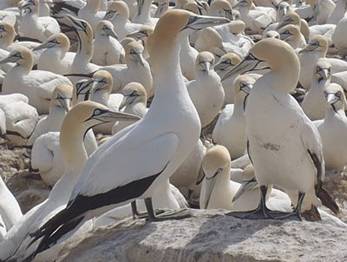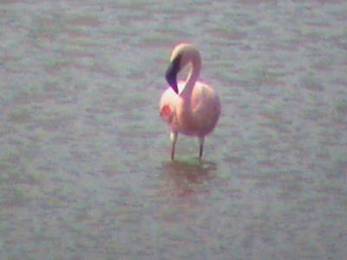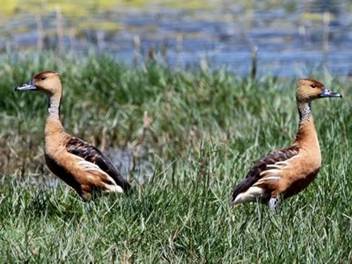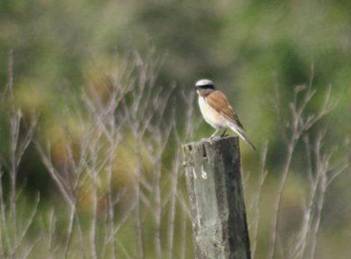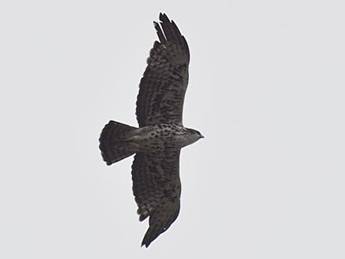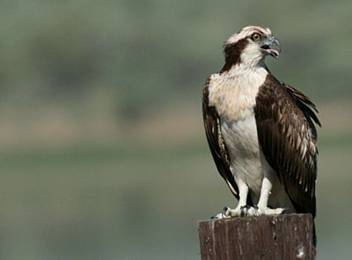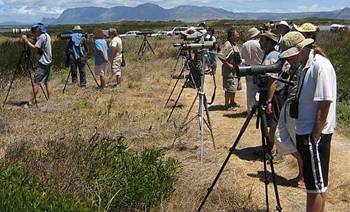SA Rare Bird News Report - 23 November 2010
Trevor Hardaker
|
|
|
|
|
|
|
This is the Southern African Rare Bird News Report issued at 21h15 on Tuesday, 23 November 2010. Information has been gleaned from various websites, email groups as well as from individual observers who have passed on their sightings. This report cannot be taken as being totally comprehensive as it is based only on information made available at the time of writing. All bird sightings reported here are reported in good faith based on information as provided by the observers. Any inaccuracies are totally unintentional and the writer cannot be held liable for these. For those who may have only joined the group recently and are interested in finding out what has been seen in the past, previous reports can be viewed at http://groups.google.co.za/group/sa-rarebirdnews |
|
|
|
|
|
Well, finally my email problems seem to be resolved (a BIG thanks to Sion Stanton for assisting with this!) and now I can get back to sending out proper reports. Because I have not had access to my emails for a few days, my inbox is once again totally clogged up, so if you have sent me an email recently and are expecting a reply, please just give me a little while to work through all of the emails and I will try and get back to you shortly.
So, on to some news…
Starting in the Western Cape, the star attraction over the weekend was the AUSTRALIAN GANNET at Bird Island in Lambert’s Bay. It performed well for a small group of dedicated twitchers on Saturday afternoon where it showed from the edge of the colony of Cape Gannets closest to the hide. Unfortunately, Sunday proved less successful for the crowd that had gathered to hopefully add this great bird to their lists and the bird was not seen the entire day. No further reports yesterday or today have been received either.
The bird is almost certainly still there, but with no less than 18 000 Cape Gannets on the island, it can prove extremely difficult to find. One of the easiest features to look out for to pick this individual out in amongst the many others are the white outer tail feathers, but one must bear in mind that many of the Cape Gannets can also show this feature. However, most of the Cape Gannets show only one or two white outer tail feathers whereas this individual has at least 3 white outer tail feathers on each side. They are also symmetrical whereas many of the Capes have asymmetrical white outer tail feathers. So, once you have the white outer tail feathers, other important features to look out for are the slightly more deeper orange head, the obviously short gular stripe and the darker grey eye as opposed to the very pale eye of the Cape Gannets. If you do think you have managed to locate the bird and can get a close look at it, other features worth checking are the colour of the facial skin (black in Capes and charcoal in Australian) and the deeper blue colour of the eye ring. The charcoal facial skin on this individual also runs in a much thinner band up around the top of the eye than on any of the Capes. Included below are hopefully some photos which will show these features. |
|
|
|
|
|
|
|
|
Australian Gannet at Lambert’s Bay © Leshia Upfold |
Australian Gannet at Lambert’s Bay © Trevor Hardaker |
|
|
|
|
|
|
|
Australian Gannet in foreground with Cape Gannet behind at Lambert’s Bay © Trevor Hardaker |
|
|
|
|
|
Elsewhere in the province, there are still a number of good birds being reported. Starting around Cape Town, the temporary wetlands in the Phillipi area which are now drying up rapidly still held good numbers of WHITE-FACED DUCKS as well as at least 3 FULVOUS DUCKS yesterday while, out at Paarl Bird Sanctuary, no fewer than 12 WHITE-FACED DUCKS were also still present on the weekend. One of the regular pelagic trips out of Simon’s Town on Sunday turned up a cracking WANDERING ALBATROSS in amongst the more common species whilst Harold Porter Botanical Gardens in Betty’s Bay produced a BROWN-BACKED HONEYBIRD and a male BLACK CUCKOO-SHRIKE on the weekend as well. In the Robertson area, 3 CINNAMON-BREATED BUNTINGS were located on a farm along the Silverstrand road on Saturday while the Overberg region also snuck in turning up a RED-BACKED SHRIKE yesterday at the low water bridge at Swartrivier.
In the Little Karoo, a LESSER FLAMINGO seems a little out of place on a dam at Buffelsdrift, about 10km outside of Oudtshoorn (apparently, it has been in the area for a week now), whilst over the mountains on the Garden Route, a LONG-CRESTED EAGLE was seen on Friday at Pacaltsdorp near George. Staying on the Garden Route, a PECTORAL SANDPIPER was located at Woodbourne Pan in Knysna on Saturday whilst a RED-BACKED SHRIKE was found on Sunday near the turn-off to the SAN Parks offices at Rondevlei in Wilderness. |
|
|
|
|
|
|
|
|
White-faced and Fulvous Ducks at Phillipi © Otto Schmidt |
|
|
|
|
|
|
|
|
Lesser Flamingo at Buffelsdrift © Gertjie Malherbe |
Fulvous Ducks at Phillipi © Otto Schmidt |
|
|
|
|
|
|
|
Pectoral Sandpiper at Woodbourne Pan © Anne Brash |
Red-backed Shrike in Wilderness © Alan Collett |
|
|
|
|
Moving into the Eastern Cape, a EUROPEAN BEE-EATER on Saturday in Beacon Bay, East London caused some excitement amongst locals whilst, on Friday, 4 SCALY-FEATHERED FINCHES were located at Kwandwe Game Reserve near Grahamstown, an apparently south-easterly extension of range by some way. A male MACCOA DUCK was still present at Butterworth Sewage Works yesterday whilst an added attraction was the arrival of 3 SOUTHERN POCHARDS at the site as well.
The province’s star attraction, however, was a winter plumaged RED-NECKED PHALAROPE located at the Tankatara Salt Pans near Port Elizabeth on Sunday. This site has a history of turning up this species and is clearly worth keeping an eye on for just what else it might turn up.
Further up the coast in Kwazulu Natal, the regular AYRE’S HAWK EAGLE in the Empangeni area was still putting in appearances over the area late last week while the Southern Sanctuary area in Richard’s Bay still held at least 2 CRAB PLOVERS on the weekend. However, it is once again the seabirds that are stealing the show in the province with a trip that has been working the area between 180 – 200 nautical miles east of Richard’s Bay since Thursday. This trip has already turned up good numbers of SOOTY TERNS, 8 WANDERING ALBATROSSES, a GREY PETREL and no fewer than 20 BARAU’S PETRELS, a former mega bird in the subregion! However, all of the above were overshadowed by a small all dark storm petrel seen on Sunday which, at this point, remains unidentified. Unfortunately, only one very low resolution photo of it has been received so far via the satellite email system on the boat and not enough detail can be seen on the photo to be sure of which species it is, but there only seem to be 2 possible contenders – it is either a Matsudaira’s Storm Petrel (with only 2 previous records for the subregion) or a Swinhoe’s Storm Petrel which would be a new species for Southern Africa. We are hoping to receive further photos shortly to be able to confirm the identification of the bird, but it is a seriously exciting record!
Heading over into the North-west Province, an OSPREY showed well on Saturday at the Klipvoor Dam wall in Borakalalo Game Reserve while a rather bizarre record comes from a farm close to the Olifantshoek Dam where a male NARINA TROGON was recorded in thick bush along a river there! It certainly must have felt a little out of place there with no real decent forest within any sort of proximity. |
|
|
|
|
|
|
|
|
Ayre’s Hawk Eagle in Empangeni © Patrick Rollinson |
Osprey at Borakalalo Game Reserve © Geoff Finney |
|
|
|
|
Into Gauteng where an EURASIAN HONEY BUZZARD caused some excitement last Monday at Roodeplaat Dam Nature Reserve while, yesterday, a very out of range BROAD-BILLED ROLLER was located at Mutango Lodge not very far from Roodeplaat Dam. This latter record appears to be an exceedingly rare bird in the province with only one previous record indicated on the SABAP2 database. Perhaps one of the Gauteng locals out there might have further information on how often this species has been recorded in the province before?
Moving into Mpumalanga, there was also some excitement on Saturday when a gorgeous male AFRICAN PYGMY GOOSE was found at Mkhombo Dam, seemingly well west of their normal distribution in the province. I have also received a delayed (21 October 2010) report of a GREEN SANDPIPER seen from the high level bridge over the Olifants River in the Kruger National Park along the main road between Satara and Letaba.
Lastly, in Namibia, a GLOSSY IBIS was present at Gammams Sewage Works in Windhoek on Friday, a rather unusual species for the central parts of the country, whilst a EURASIAN OYSTERCATCHER was still present at Walvis Bay Salt Works on Saturday. |
|
|
|
|
|
|
|
|
Eurasian Honey Buzzard at Roodeplaat Dam NR © Mark Tittley |
Broad-billed Roller at Mutango Lodge © Mark Tittley |
|
|
|
|
|
|
|
African Pygmy Goose at Mkhombo Dam © Neels Jackson |
Green Sandpiper on Olifants River © Gilbert Thomson |
|
|
|
|
Of unknown origin, and presumed to be escapees, a pair of BLACK AND WHITE CASQUED HORNBILLS were present in a garden in Umhlanga in Kwazulu Natal on Sunday while, in Mpumalanga, 4 BLACK SWANS have taken up residence on a dam on the farm Poplar Grove near Bethal. |
|
|
|
|
|
|
|
|
Black Swans at Poplar Grove © Dineke Ehlers |
|
|
|
|
|
Don’t forget to send through your details to be included on the various listing clubs that are hosted at www.zestforbirds.co.za. This website also has an extensive rarities gallery that has many additional photos of a number of rarities that are mentioned in these reports. |
|
|
|
|
|
|
|
|
|
|
|
Thank you to all observers who have contributed their records. Please continue to send through any reports of odd birds as well as continued updates on the presence of rarities already previously reported, no matter how mundane you think they may be. Even if you think someone else has probably sent in a report, rather send the report yourself as well. The only way to improve this service and to make it as useful as possible to everyone is if it can be as comprehensive as possible. |
|
|
|
|
|
Kind regards Trevor |
|
|
------------------------------------------------------------------------
TREVOR HARDAKER Cape Town, South Africa
MY WILDLIFE PHOTOS See my photographic attempts at:
ZEST for BIRDS Trevor Hardaker and John Graham Pelagics, rarity photos, listing clubs and more:
SA RARE BIRD NEWS Get the latest rarity news by joining at: http://groups.google.co.za/group/sa-rarebirdnews
SOUTHERN AFRICAN RARITIES Online database of all SA rarities ----------------------------------------------------------------------- |
|
|
|
|


